|
The man who ate a living mouse |
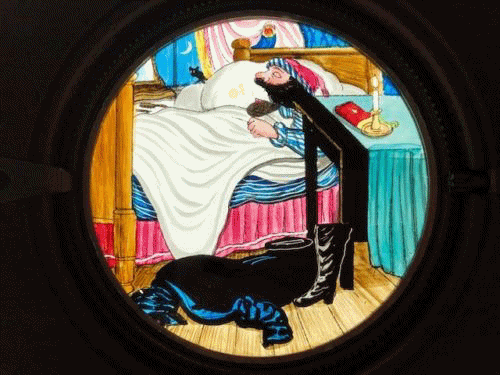 |
|
|
|
This single slipping slide is the simplest implementation of this effect. A glass with the image of the mouse is simply slid over the glass with the image of the sleeping man. |
|
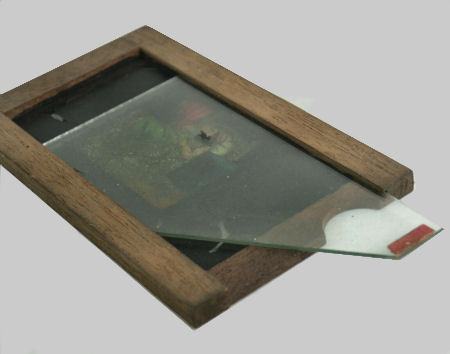 |
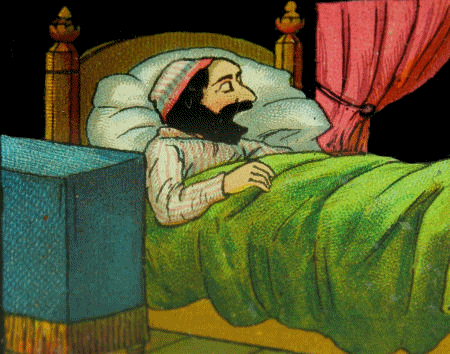 |
| A somewhat more complicated version consists of a wooden frame with three glasses. The main glass is stationary and depicts a man asleep in bed with his mouth open. One side of the slide has a wobbling glass with the lower jaw. Moving the glass up and down makes the manís mouth appear to open and shut. | |
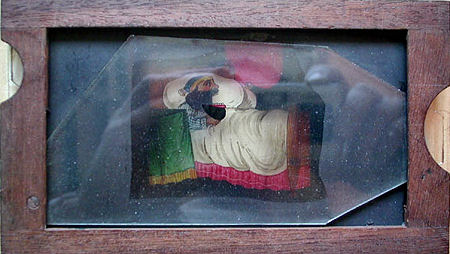
|
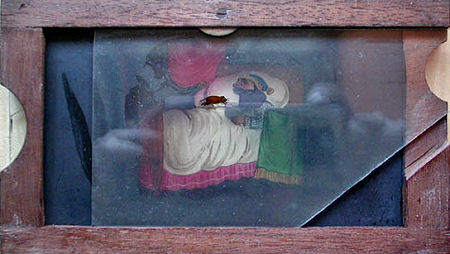
|
|
The other side has a slipping glass on which the mouse is painted.
Shifting the glass creates the impression that the mouse is walking on the bed and
that it finally disappears into the
manís mouth. The accompanying sound effects, snoring, spluttering and chomping, must be provided by the lanternist himself. Size: 9 3/4" x 4 1/2" (25 cm x 11.5 cm. |
|
| This is the story told by the lanternist when showing the slide above: | |
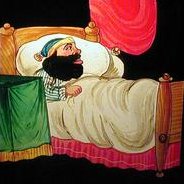
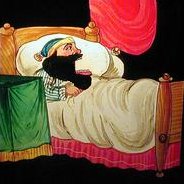 |
Mr. Snore was in a deep sleep. He had been working hard the whole day and now he is enjoying his well deserved rest. The old Snore lived up to his name: the whole night long his bearded jaw dropped down every time he took a deep breath and closed again when he breathed out and every time this was accompanied by a loud, penetrating noise. Snore........ poehh......... snore......... poeh........, the whole night long! |
| I suppose this was the reason that mrs. Snore did not share his bed. She had moved to the guestroom many years before. Yet mr. Snore was not alone in his bedroom. A week, squeaking sound meddled with the loud snoring. Suddenly a curious mouse jumped onto the blankets of his bed. The nosey little animal decided to come closer to Mr. Snore's moving head to examine where these unpleasant sounds were coming from. That was, as we will see, a big mistake. |
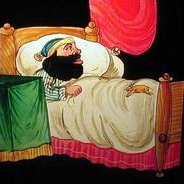
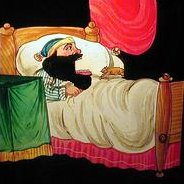 |
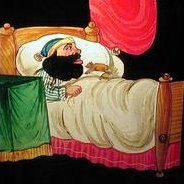
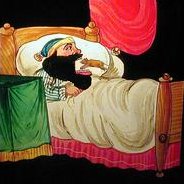 |
Carefully, hesitantly,
the small mouse came closer to the source of the sound. Snore........
poehh......... snore......... poeh....... Just when it was very close to the big mouth, the jaws opened wide and a deep breath drew the overconfident animal in the direction of the bearded face. |
| The poor creature disappeared into the wide opened mouth of the snoring man. Mr. Snore closed his mouth, chomped, swallowed, spluttered and went on snoring again, not aware of what had happened. |
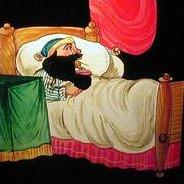
 |
|
| Text: Henc R.A. de Roo | ||
|
An even more luxurious version of the mouse-eating man. A combination of a single pivoted glass slide for operating the jaw and a revolving glass moved by means of a crank with gear and a cogwheel on the edge of the glass disk to make the mouse appear and disappear. Part of the mouse's journey is shielded by the man's beard, part of the table next to the bed, and a dressing gown on the floor. |
|
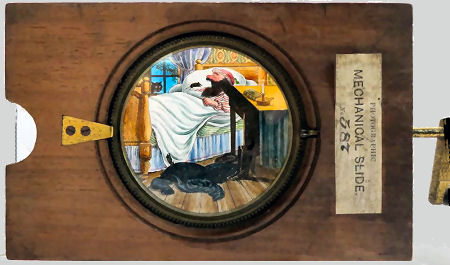 |
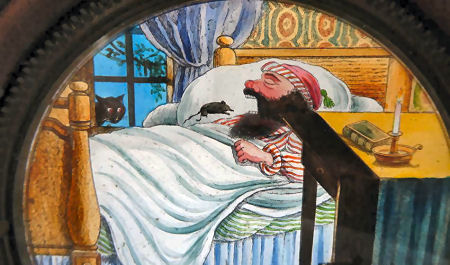 |
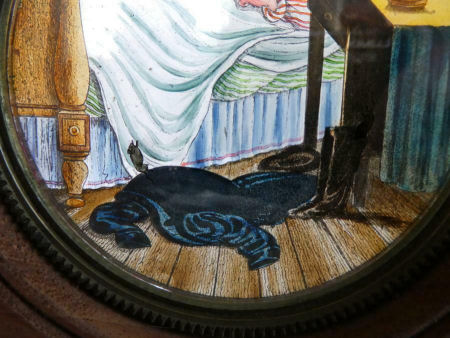 |
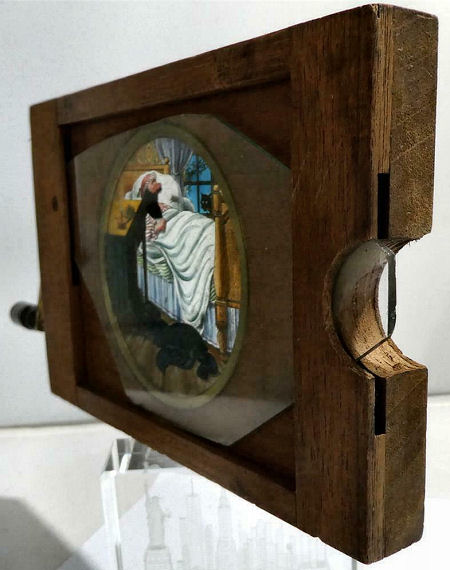 |
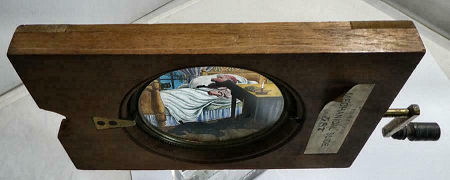 |
|
| By turning the handle of this slide a circular glass with the mice painted on it was rotated to create the impression of an endless stream of mice, leaping into the manís mouth, thus making the story, if possible, even more terrifying. (Mind the black dressing gown at the foreground that hides the mice when they are down) Moving another glass made the manís jaw drop and shut. | |
|
|
|
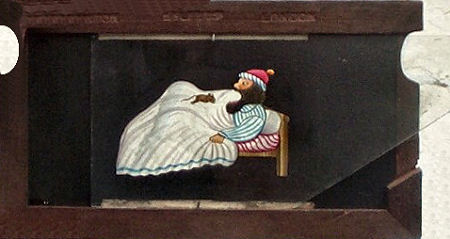
This British slip and pivot slide measures approx. 7 by 4 inches. It was made by Newton & Co. of London. |
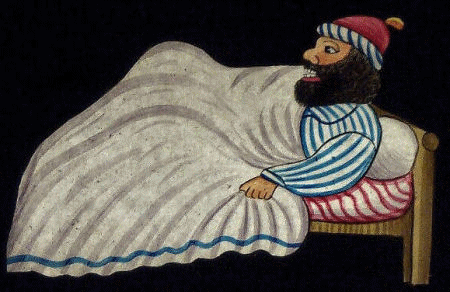 |
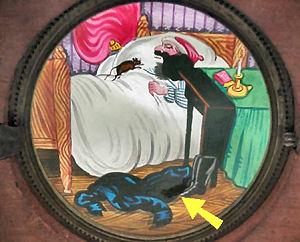 |
This shows the position of the mouse, in fact two mice, when the handle
is turned. The second mouse is hidden by the black coat while the other
mouse is on the bed. Below some other ways to hide the mouse while he is not on the blankets of the bed. |
|
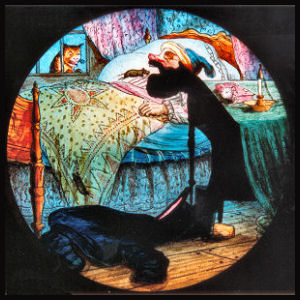 |
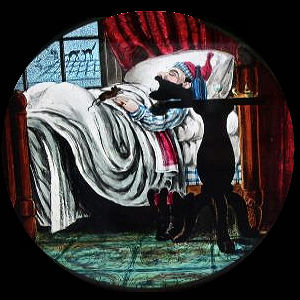 |
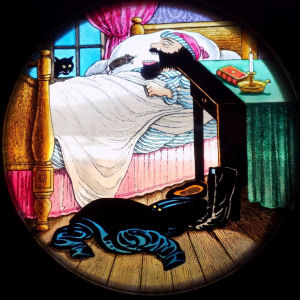 |
|
Illustration from the GRAPHIC, an illustrated weekly newspaper dated February 23, 1889: Magic lantern entertainment given to 1.150 poor and destitute children by the members of the Fulham Liberal Club and Institute. |
||
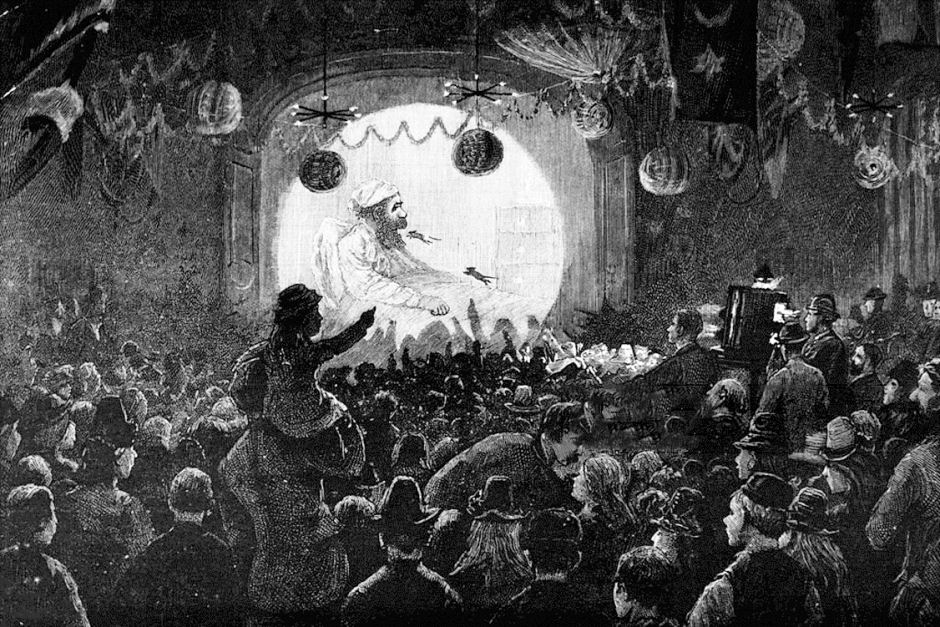 |
||
|
The rat swallower was probably the most popular
lantern projection of all time. If the spectators had never seen it
before, they could literally bring the house down in their excitement. A
pioneering lanternist described his very first lantern show in a village
hall, in the 1850s: When I projected the image of a man swallowing rats onto the screen, it caused a stamping and screaming that you would not expect from a civilized audience. It caused the floor beams to bounce and coincidentally caused the screen frame to fall towards the lantern. There was a crash, the frame knocked the lens out of the flange and the lantern over. After peace was restored and the audience had left, I examined the apparatus and concluded that the five shillings I received barely compensated for a broken condenser and a dented lens mount. |
||
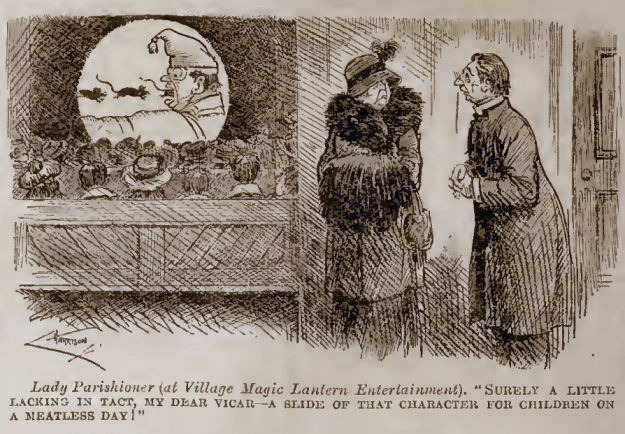 |
Cartoon in Punch, March 27, 1918. Punch was a British satirical and humorous magazine in the 19th and 20th centuries that has become world famous for the many socially critical cartoons it published. This cartoon shows that the mouse-eater slide was widely known at the time. |
|
|
A variant of the mouse-eating man is this double slipping slide. Here the snoring man unsuspectingly consumes a big, fat, scary spider in his sleep! The wobbling glass controls the man's jaw, the sliding glass makes the spider crawl on his pillow. The moving slide was made by Carpenter & Westley, London. |
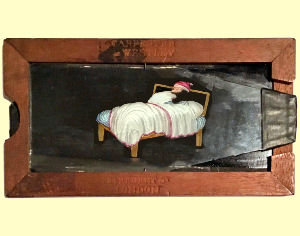 |
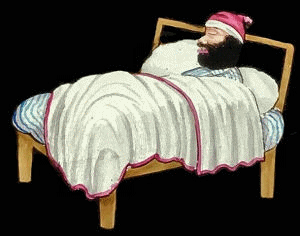 |
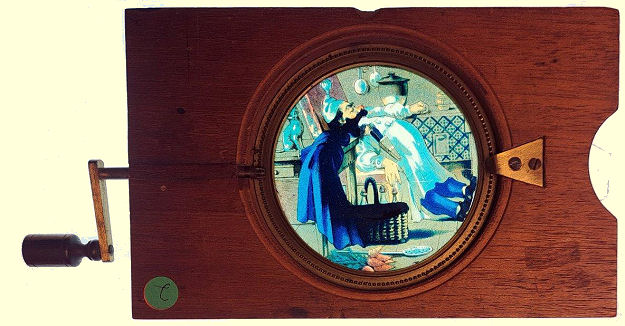 |
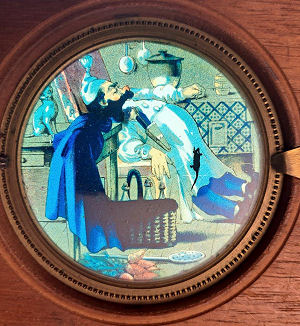 |
|
|
Another variant of the mouse-eating man. Mr. Snore
does not lie in bed all day either. Sometimes he even sits on a chair.
But also when he sits he sleeps and snores. And even then the mice know
where to find him. A wobbling glass makes the man's lower jaw open and close; by turning the crank the mice emerge from the basket. |
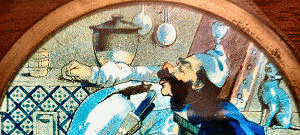 |
|
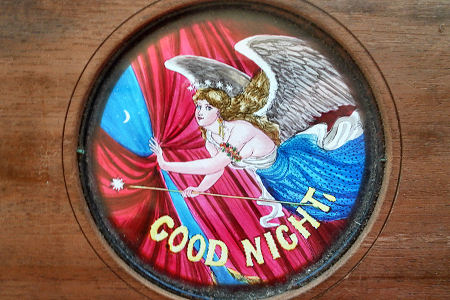
|
Was not this a horrible story ???? Despite everything, I still wish you a very GOOD NIGHT!!! |
| More mechanical magic lantern slides ???? Click here. | |
| |
©1997-2023 'de Luikerwaal' All rights reserved. Last update: 22-12-2023. |
|
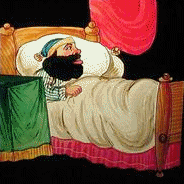 There are many, many mechanical moving slides produced in the time the magic lantern
was in use. They were provided with
slipping plates, pulleys, levers, rackwork and other arrangements, by
means of which life and motion were apparently imparted to the objects exhibited.
By far the most popular moving magic lantern slides of the nineteenth
century was the 'Man eating Rats' (or mice). The sleeping man who swallowed a living mouse
(or rat) became a real classic and was produced in a good
many designs, in both rackwork and slipping-slide versions. The audience enjoyed
the performances, complete with the requisite snoring and chomping and
lip-smacking noises and often participated by snoring along with the
sleeper or counting the rats consumed.
There are many, many mechanical moving slides produced in the time the magic lantern
was in use. They were provided with
slipping plates, pulleys, levers, rackwork and other arrangements, by
means of which life and motion were apparently imparted to the objects exhibited.
By far the most popular moving magic lantern slides of the nineteenth
century was the 'Man eating Rats' (or mice). The sleeping man who swallowed a living mouse
(or rat) became a real classic and was produced in a good
many designs, in both rackwork and slipping-slide versions. The audience enjoyed
the performances, complete with the requisite snoring and chomping and
lip-smacking noises and often participated by snoring along with the
sleeper or counting the rats consumed.